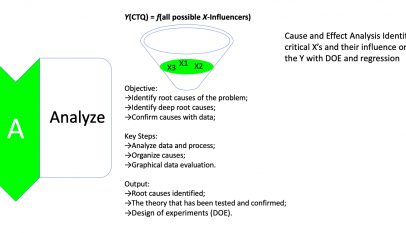It is always frustrating when you have to wait a long line while checking out from the store, especially when extra staff is available and not helping at cash registers.
This type of workflow problem needs to be fixed, and there are a number of metrics to measure how well any process flows.
To start, you can analyze the
Work in Process or WIP,
which are all the items being processed and items in between waiting to be processed.
For example, if you are in line at the grocery store the WIP for checkout is the total number of customers being checked out plus the number of customers standing in line waiting to be checked out. This is important because the more WIP there is, the longer the wait and the longer it takes to leave the grocery store.
The rates at which customers leave the grocery store after checking out is the throughput rate. Another metric to consider is the cycle time for a process step or workstation. It’s the time it takes between starts or completions of processing items. Sometimes it’s known as workstation cycle time. For example, for the checkout register the cycle time is how long it takes to complete the process of checking out each customer.
Cycle times starts when the groceries are loaded onto the belt and ends when the customer leaves the checkout station. How cycle time is used depends on the context. It can be used for a machine or workstation, like the checkout register. Or, it can be used as cycle time for the whole production system, such as the grocery store visit.
Let’s say there are four checkout registers, an average of 10 customers that pay and leave the store every 20 minutes. Then the cycle time for the grocery store is 20 divide by 10 which is two minutes. So customers are leaving at a rate of one every two minutes.
On a per hour basis that rate is 30 customers per hour. This is also called throughput rate. It would be great if throughput rate can keep up with the rate of customer demand so that there is no delay or build up of WIP.
The rate of customer demand is called the Takt rate or Takt.
Takt time is a borrowing of the Japanese word takutotaimu (タクトタイム),
which in turn was borrowed from the German word Taktzeit, meaning clock interval.
The Takt or Takt rate is the drum beat of customer demand. If we convert rate to time we get Takt time, which is the time between units that customers demand.
For example, for the grocery store if the time between customers who want to check out is one minute, then Takt time is one minute and the Takt rate is one customer per minute or 60 customers per hour. So, for the grocery store since the cycle time is two minutes then customers will have to stand in line and wait and there will be a build up of WIP.
From a manager’s perspective if we don’t want my customers to wait then we shall want to match my grocery store cycle time to be no more than the Takt time. There are a couple of things we can do. We can speed up cycle time of each checkout register, work faster, twice the speed in this case, or we will put those clerks who are milling around to work and re-assign them to checkout customers. We’ll then increase the open checkout lines from four to eight. So, the next time you go to the grocery store analyze the process flow metrics and see if the throughput rate matches the Takt rate.

















